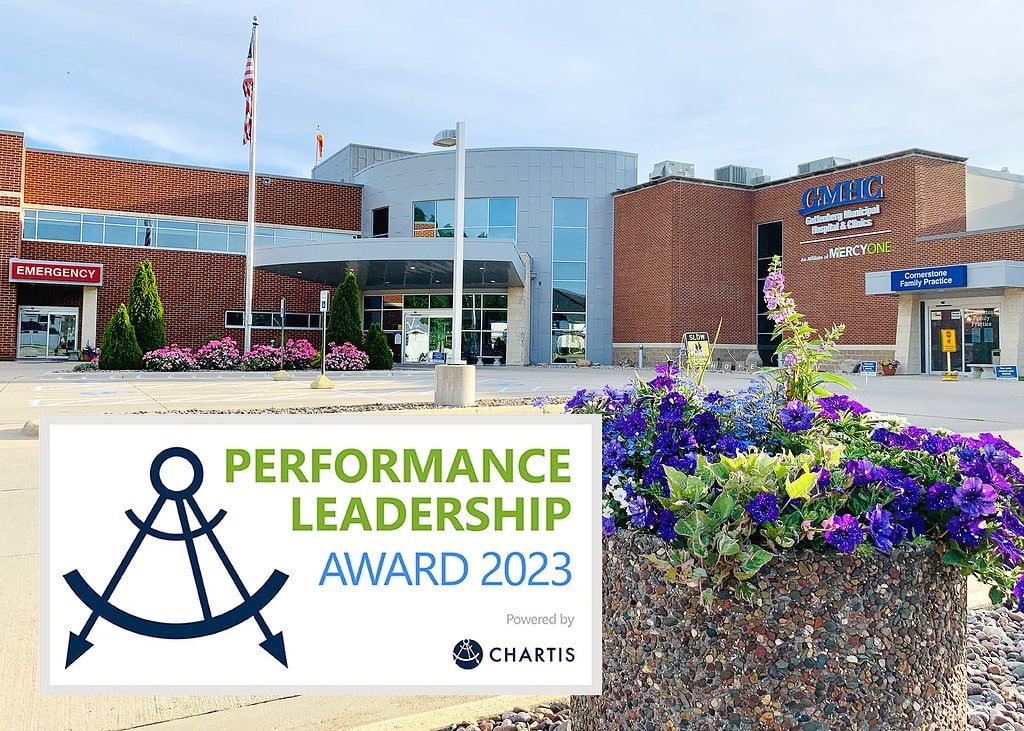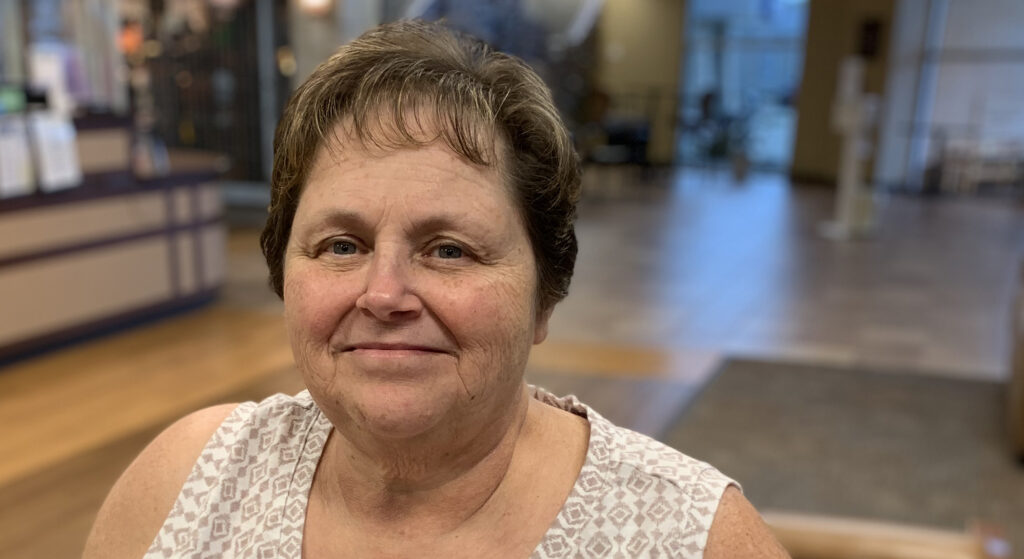In May of 2020, while isolating during the COVID pandemic, Michelle Geuder discovered a lump on the side of her right breast during her routine shower protocol. At first, she thought it was an irritation from her bra, but something inside told her it was more. “Somehow, I already knew what it was,” she recalled. When Dr. Smith called with her mammogram results, she wasn’t too surprised that something had shown up on the scans. Since the next day was her birthday and wedding anniversary, Michelle waited until Monday for the follow-up appointment. An ultrasound and a biopsy confirmed that she had ER positive, PR positive, Her2 negative Breast Cancer.
Dr. Smith encouraged Michelle to get a second opinion, which she obtained at Mayo Clinic in La Crosse, WI, from an oncologist who had been recommended by her sister, through first-hand experience. The results were confirmed. Michelle returned to GMHC to consult with surgeon, Dr. Mansfield. Because she was at Stage 1A, her options included a lumpectomy or a mastectomy. Wanting the best results for her and her family, Michelle chose the mastectomy. Michelle’s brother-in-law stepped in to work with her insurance company until they agreed to let her be treated at Mayo. The July 1 (2020) surgery took place at Mayo Clinics in La Crosse. Her husband was allowed to be there but waited in the car during surgery because of the pandemic guidelines.
Michelle’s mastectomy included removal of most of the lymph nodes in her right arm, and several from her left arm, which thankfully, showed no cancer. Michelle and her husband both learned a lot following her surgery, including how to empty her four drains. Her follow-up treatment began in August (2020) with 16 weeks of chemotherapy (every other week) in La Crosse. Her husband was a great help during this time, driving her to appointments and being supportive.
Although Michelle’s oncologist wanted her pre-chemo appointments (also every other week), like COVID tests, blood tests, and cleaning of her port, to be done at Mayo, Michelle insisted on going to GMHC for these services saving her time, miles, and money. She commented, “I really wanted to have as much done here, as close to home, as possible. It was helpful for me to be assisted by people I was familiar with, like Jeannie Funk in the surgery department, and Lana Troester and Heidi Bolsinger from Patient Accounts, who served as my patient advocates with insurance questions and pre-authorizations. They were all a great help!”
When radiation was delayed in January of 2021, again due to insurance, Michelle’s radiation doctors worked with the insurance company to get her treatment covered. For thirty days straight, excluding weekends, Michelle drove herself to Mayo in La Crosse for radiation treatment. “The trip to La Crosse is a two hour drive each way, so this was a difficult time,” Michelle admitted. The radiation was very rough on her skin. She was expecting a sunburn-like redness and peeling, but it was much worse. When the treated bandages came off, so did her skin, and it was like starting over every day. Consequently, the healing time from the radiation took much longer than normal.
The extensive damage to Michelle’s skin caused the reconstructive surgery date to be postponed twice; in August 2021 and January 2022. Radiation and inactivity with her right side had left a stiff, numb, lumpy mass of skin, and prompted concerns that the surgery may not even be possible. Her radiation doctors and the plastic surgeon suggested Lymphedema Therapy to regain some movement and decrease her swelling to improve the feeling within and around her surgery site.
Prior to this time, Michelle had read an article about Physical Therapist Kimberly Franzen’s certification in Lymphedema Therapy. At the time, she didn’t think it applied to her condition, but a referral from Dr. Smith allowed Michelle to see Franzen in January. Franzen was able to use Lymphedema Therapy to perform manual lymph drainage on the tissue and increase circulation, helping Michelle regain feeling, movement, and overall improved health at the surgery site.
All of Michelle’s care providers were impressed at the level of improvement after only four weeks of therapy. In March of 2022, Michelle felt much better, both feeling and seeing the therapy results, and was finally able to schedule the reconstructive surgery. “I recommend Kim Franzen to everyone who might need lymphedema therapy. She walked me through the steps and taught me how to do it myself, and my lymphedema continues to improve. Kim is so personable and really cares about her patients,” said Michelle. “It was incredible to see the therapy making such a difference even in the appearance of the skin, which helped me push past some of the devastation I was feeling after surgery. I had no idea that lymphedema therapy could do that!”
Throughout this very difficult journey when Michelle thought about complaining, she would remind herself that she was lucky to be breathing, which helped her keep things in perspective. She was even able to stop at a few of her daughter’s basketball games while traveling home from appointments, which gave her something to look forward to. Michelle said, “I feel as though I’m a strong person, but I also have a strong support system.” Family and the tight-knit community stepped up to help, donated money, and had a fundraiser for her. Michelle remained working, which helped her place focus on something besides her health. Her boss was very understanding about her needs and allowed her to keep a flexible work schedule.
Michelle will continue her monthly injections along with taking a daily pill for the next three years to complete her treatment. Every October, during Breast Cancer Awareness month, she urges others to have their yearly mammogram to help catch problems early, and she is an advocate for self-checks.
When asked how she would describe the care she received at GMHC, she replied, “The care here was stellar! It is on-par with any treatment you would get at a bigger hospital, and without all the hassle. My primary care doctor at GMHC communicated easily with my oncologist because they are on the same computer network. I can’t say enough about the quality care I received here, and how thankful I am that it is only two blocks from my home.”
In closing, Michelle reflected, “In April of 2020, when we were all isolated and shut down, I drove by the hospital, and thought to myself, ‘I’m glad that at least I’m not in there right now’…and then I was… It turns out that this was a very good place for me to be!”




